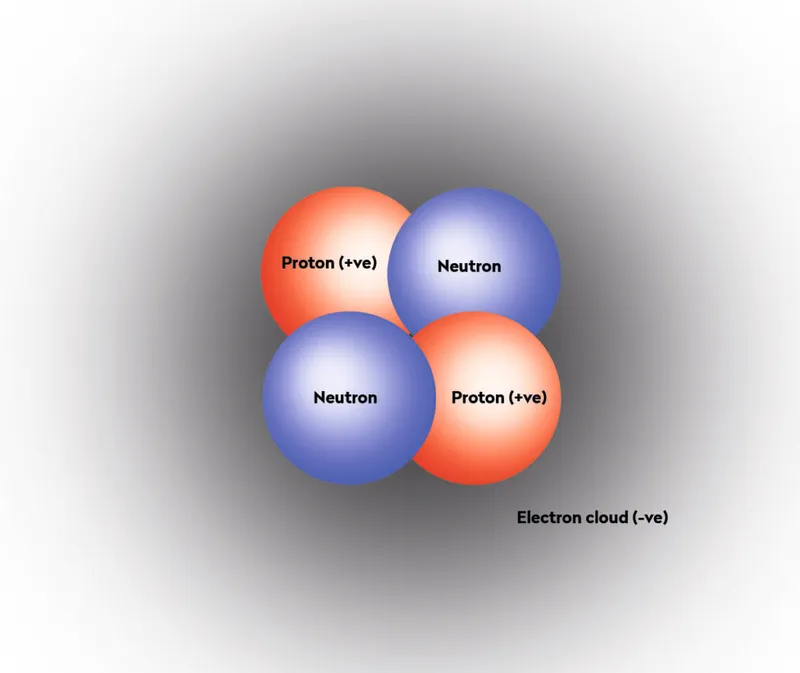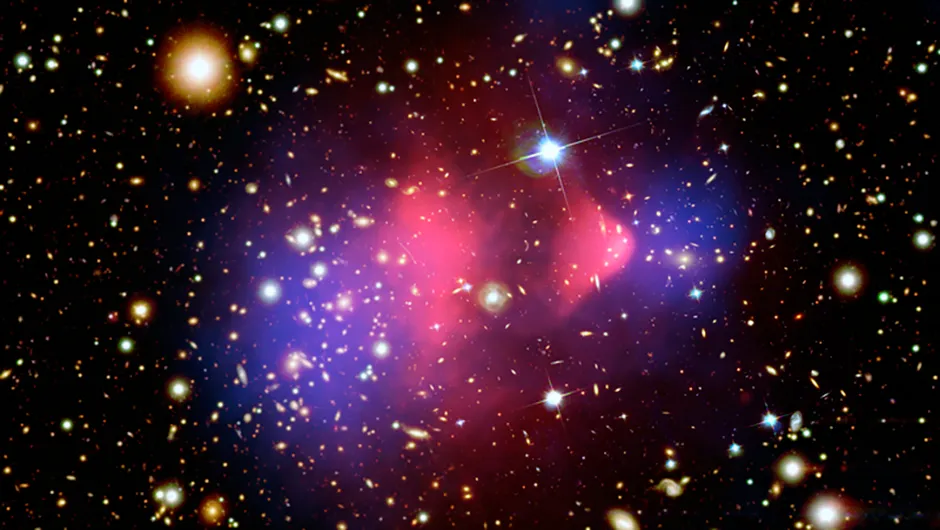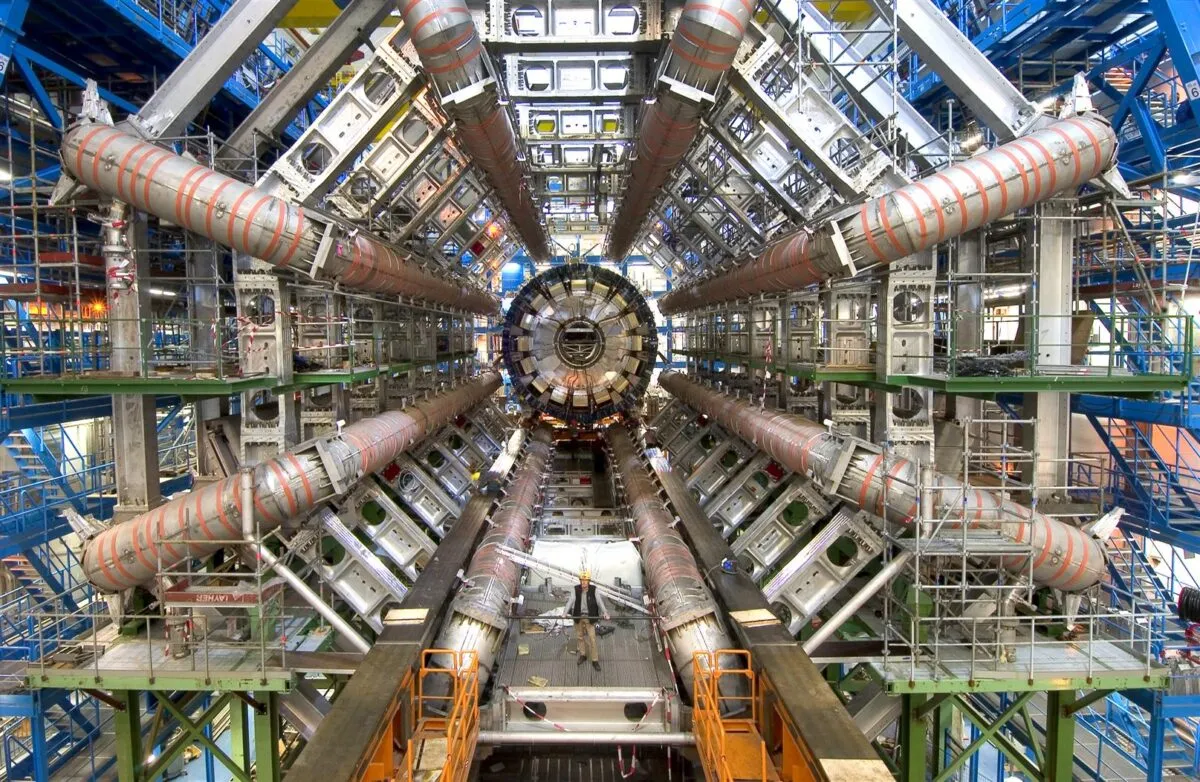Supersymmetry (also known as SUSY) is an as-yet unproven theory that could solve a number of nagging problems in particle physics, such as why gravity is so weak compared to the other forces in nature, or what the nature is of dark matter.
However, it comes at a cost: if supersymmetry is right, nature should host a large number of additional particles, beyond the many we already know.
For more mind-bending science, read our guides to nuclear pasta, spacetime, quantum immortality and how we measure distance in space.

A primer on particles
Currently, physicists know of two families of elementary particles: fermions and bosons.
Fermions are particles of matter, like quarks, electrons and neutrinos, which make up the material world.
In contrast, bosons are force-carrying particles: photons (particles of light) carry the electromagnetic force; the so-called W and Z bosons carry the weak nuclear force which is responsible for the decay of radioactive atoms, and gluons carry the strong nuclear force which binds quarks together.
The fourth fundamental force of nature, gravity, should be carried by a particle known as the graviton, which so far has escaped detection because of its incredibly small mass.
These two families of elementary particles, fermions and bosons, are distinguished by a property known as spin, which bears some resemblance to rotation.
In the early 1970s, four independent teams of researchers wondered why nature would entertain two different types of particles.
Might it be possible, they argued, that fermions and bosons are two sides of the same coin? In other words, that they are linked by some kind of underlying symmetry?
If so, every fermion should have a (much more massive) bosonic partner, and vice versa. Soon enough, funny names for these supersymmetric partner particles were conceived.
Selectrons, squarks and sneutrinos are the proposed bosonic partners of fermions; photinos, winos and zinos, and gravitinos would be the fermionic partners of bosons.

Supersymmetry within the standard model
After the standard model of particle physics became widely accepted in the first half of the 1980s, supersymmetry rose in popularity.
After all, the standard model didn’t explain several aspects of our Universe and so could not be the final word.
For instance, there is no dark matter in the standard model, but one of the SUSY particles could potentially constitute this mysterious substance.
Might SUSY be the right extension to the standard model needed to solve these issues, and perhaps point the way to a grand unification of the various forces of nature – an overarching Theory of Everything?
At first, supersymmetry might seem a very ad hoc idea. Then again, symmetry arguments have often helped scientists to make sense of the world.
When Russian chemist Dmitri Mendeleev was devising the periodic table in 1869, he recognised certain patterns in the properties of known elements.
He predicted several unknown chemical elements, which have now been discovered.
Likewise, the existence of quarks was predicted in 1964, four years before they were discovered, on the basis of symmetry considerations.

What if supersymmetry really existed?
If supersymmetry is true, there would be yet another increase in the number of elementary particles.
First, the additional families with their massive ‘cousins’ of the up-quark, down-quark, electron and neutrino.
Then antimatter. With SUSY, the particle inventory would double once more.
So what’s the current situation? Well, the mass of the Higgs particle, discovered in 2012, fits in well with the expectations from supersymmetry.
However, the massive sfermions and bosinos predicted by SUSY have all escaped detection so far.
Yes, it could be true that the current generation of particle colliders is not powerful enough to produce these heavyweights.
But, very gradually, physicists are starting to lose their confidence in the theory.
And that has cosmological ramifications.
If supersymmetry is wrong, scientists have to search elsewhere for a solution to one of the biggest problems in astronomy: the true nature of dark matter.

A grand theory of everything
No one knows why there are four different fundamental forces of nature: gravity, the electromagnetic force, and the weak and strong nuclear forces.
Then again, there may be only one.
In the very first moments after the origin of the Universe, this single force would have ‘split’ into the four we now know.
Indeed, in the 1970s, Sheldon Glashow, Abdus Salam and Steven Weinberg successfully formulated the electroweak theory, a unified description of the electromagnetic force and the weak nuclear force.
In the future, physicists hope to also include the strong nuclear force, in what’s known as a grand unified theory, or GUT.
The ultimate dream is a single overarching Theory of Everything that would describe and explain all particles and forces of nature, including gravity.
For many years, 10-dimensional superstring theory (in which elementary particles are described as different vibration modes of microscopic strings) has been a popular candidate for a Theory of Everything.
This theory includes supersymmetry, but – partly because it turns out to be all but impossible to confirm (or refute) experimentally – it has fallen out of favour over the past years.
This article appeared in the September 2024 issue of BBC Sky at Night Magazine
